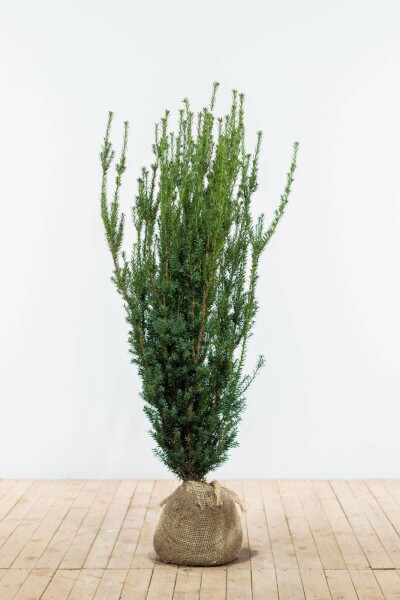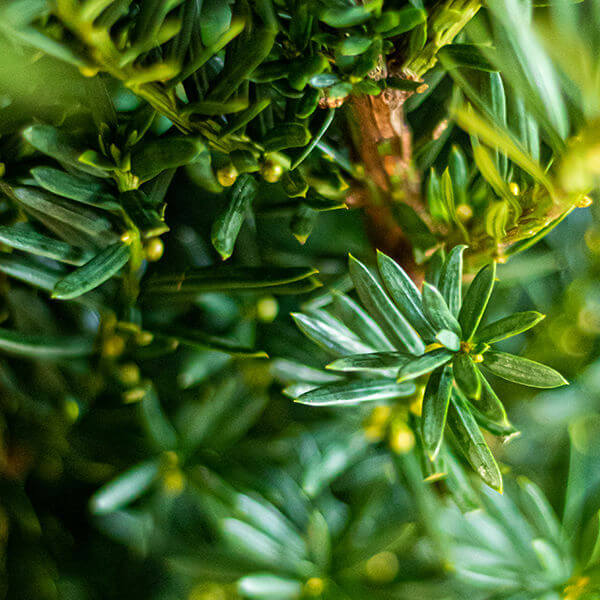Hedging Plants For Urban Spaces
Hedging Plants For Urban Spaces
Blog Article
Best Hedging Plants For Driveway Edges
Enhance your garden's appeal with lush hedge ranges such as Yew (Taxus), Thuja, Laurel, Photinia, and Bamboo, commemorated for their structural integrity and ecological benefits.
Yew and Thuja supply evergreen protection and winter resilience, while Laurel provides quick growth and broad, fragrant leaves.
Photinia includes seasonal appeal with its lively red foliage, and Bamboo lends a low-maintenance, peaceful atmosphere.
These hedges improve air quality, lower noise, and produce tranquil, personal spaces.
Appropriate planting, spacing, and upkeep ensure vigorous development and ecological harmony.
Check out how these lavish varieties can elevate your garden's appeal and well-being.
Key Takeaways
Change Your Garden With Lush Hedge Ranges
- Select Yew for its thick, evergreen growth and exceptional durability.
- Go with Laurel for its fast growth and broad leaves, guaranteeing fast personal privacy.
- Choose Photinia for its vibrant seasonal foliage, which turns a striking dark red.
- Use Bamboo for a low-maintenance, winter-hardy hedge with visual appeal.
- Area plants 2-3 per meter and prune frequently for optimum growth and health.
Popular Hedge Plants
When transforming a garden with lush hedge ranges, it's vital to consider popular hedge plants such as Yew, Thuja, Laurel, and Photinia due to their distinct qualities and benefits.
Yew (Taxus) is highly esteemed for its durability and thick, green development, making it a prime option for sustaining landscapes.
Thuja is kept in mind for its evergreen foliage and robust winter season strength.
Photinia includes seasonal vibrancy with red leaves that darken with time, developing vibrant visual appeal.
Laurel uses rapid development and aromatic, broad leaves, suitable for quick privacy.
Additionally, Bamboo is an excellent option for atmosphere, using a low-maintenance, winter-hardy choice that improves the garden's aesthetic with its elegant, swaying walking canes.
These choices cater to a range of horticultural requirements and choices.
Advantages of Garden Hedges
Garden hedges offer a multitude of benefits, making them a valuable addition to any landscape. These natural barriers are affordable to implement and supply considerable wind protection, boosting air flow and contributing to sound reduction. The dense foliage of hedges like Thuja and Beech ensures personal privacy by obstructing presence, creating a tranquil and secluded environment.
Hedges likewise play an important role in microclimate policy, providing a stable environment that cultivates plant growth and decreases temperature fluctuations. Their complex leaf structures filter pollutants, improving air quality and adding to a healthier garden community.
Additionally, hedges master sound reduction, taking in and deflecting sound waves to lower ambient noise levels. This double performance of offering both visual and acoustic privacy improves the total tranquility and aesthetic appeal of any garden.
Planting and Upkeep Tips
For an effective hedge, meticulous preparation of the planting area is important. Make sure the soil has correct pH and drain to support strong root development.
Space the plants appropriately for the chosen species. Water the hedge often throughout its preliminary development stage, adjusting as required with seasonal changes.
Carry out a systematic pest control and disease prevention strategy, using chemical or organic treatments when required. Routinely examine for aphids, termites, and fungal infections.
Apply mulch to keep moisture and suppress weeds. Seasonal pruning promotes dense development and air blood circulation, necessary for plant health.
Following these standards will help you cultivate a lively, properly maintained hedge that boosts the charm of your garden.
Spacing and Trimming Guidelines
Spacing and Trimming Standards
Appropriate spacing and trimming are essential for cultivating healthy, visually appealing hedges. Adequate spacing makes sure each plant gets sufficient nutrients, light, and air flow.
Follow these standards for optimal hedge upkeep:
- Spacing: Position hedge plants 2-3 plants per meter to motivate robust growth.
- Pruning Techniques: Routine pruning is vital for maintaining wanted hedge height and shape. Cut new development in summer and cut down older wood during winter.
- Seasonal Care: Adjust cutting methods and schedules according to seasonal requirements to make sure plant health.
- Hedge Height: Routinely monitor and cut to maintain the wanted hedge height and achieve consistent visual appeals.
Sticking to these actions will ensure your hedge grows, enhancing both the appeal and performance of your garden.
Choosing the Right Hedge
Selecting the Right Hedge
Picking the suitable hedge includes examining elements such as fully grown height, foliage density, and environmental strength. Successful hedge plant choice needs understanding each species' development characteristics and site-specific versatility.
For instance, Yew (Taxus) offers excellent longevity and thick development, while Thuja is notable for its winter durability. In addition, thinking about upkeep requirements is crucial; fast-growing species like Laurel or Privet demand regular trimming, whereas low-maintenance choices like Bamboo or Ivy may be more effective for those looking for minimal upkeep.
Environmental factors such as soil type, light availability, and moisture conditions ought to also direct the selection procedure. This cautious method guarantees the picked hedges will prosper, supplying both practical and aesthetic benefits to the garden landscape.
Delivery and Planting Advice
To ensure your hedge plants grow, they need to be provided by specialized couriers and planted quickly upon arrival.
Follow these important steps for effective planting:
- Soil Preparation: Enhance the soil with organic matter to improve drain and nutrient material.
- Planting Depth: Produce a trench twice the width and equivalent to the depth of the root ball.
- Watering Methods: Water thoroughly after planting, keeping the soil regularly damp but not filled.
- Mulching: Apply a layer of mulch to maintain wetness and suppress weeds.
Consumer Assistance and Service
Given the essential function of prompt assistance in horticultural pursuits, our consumer assistance team is readily available 6 days a week through telephone, email, and social networks to provide expert suggestions and quickly resolve any concerns. Their dedication to quick action times guarantees consumer complete satisfaction by resolving inquiries related to plant health, ideal planting methods, and maintenance schedules.

Availability
----------------------
Email
This extensive support group, enhanced by an outstanding 9.3/ 10 customer ranking, highlights our dedication to enhancing the gardening experience for every single client.
Frequently Asked Concerns
For How Long Does It Consider Hedge Plants to Establish?
Hedge plants usually require one to 3 years to become totally established, with the specific duration differing by species and growing conditions.
Efficient care during this vital duration is important for robust development. Consistent watering, watchful weed control, and appropriate fertilizer application are critical in promoting strong root advancement.
For example, fast-growing types like Laurel might establish more rapidly, while slower-growing ranges such as Yew might take longer. Thorough maintenance accelerates the facility procedure, resulting in dense and healthy hedges.
What Are the Finest Hedge Plants for Privacy?
The question of the finest hedge plants for personal privacy involves assessing evergreen and deciduous alternatives.
Evergreen hedges like Thuja, Laurel, and Cypress provide year-round coverage, guaranteeing constant personal privacy.
On the other hand, deciduous hedges such as Beech offer seasonal privacy, shedding leaves in chillier months.
Secret upkeep ideas for personal privacy hedges consist of routine trimming, fertilizing in spring, and proper spacing-- generally 2 to 3 plants per meter.
Furthermore, consistent watering and persistent weed elimination are important for promoting healthy, thick development.
Can Hedge Plants Draw In Wildlife to My Garden?
Yes, hedge plants can draw in wildlife to your garden by offering vital advantages like shelter, food, and nesting sites, thus improving local biodiversity. For instance, yew, holly, and laurel are outstanding for attracting birds, while ivy supports a variety of insects.
However, it is essential to note that there are some downsides, such as increased upkeep to handle insects and regular upkeep. Carefully picking and preserving hedge varieties can help stabilize these advantages and drawbacks, ultimately fostering a lively and sustainable ecosystem in your garden.
Exist Any Flowering Hedge Plants Available?
Yes, there are flowering hedge plants available that can boost the charm of your garden.
For instance, Elaeagnus, likewise referred to as Olive Willow, hedge plants produces aromatic white flowers in the fall, adding a touch of sophistication.
Photinia, another popular choice, showcases lively red leaves that develop into an abundant green, producing a vibrant visual impact throughout the seasons.
To make sure these plants flourish, it's necessary to practice appropriate pruning techniques and seasonal maintenance, such as cutting new development in the summer and cutting back in the winter season.
These measures will assist keep the health and aesthetic appeal of your flowering hedges.
How Do I Avoid Pests in My Hedge Plants?
To prevent bugs in hedge plants, employ natural insect control approaches and maintain appropriate hedge care. Present beneficial insects like ladybugs, which take advantage of damaging pests, to produce a well balanced environment.
Regularly inspect your hedges for indications of infestation and immediately get rid of any affected parts to prevent the spread. Guarantee the health of your hedges by using well balanced fertilizers and providing adequate water.
Use mulching to keep soil wetness and appropriate spacing to lower plant tension and promote robust development. These practices jointly assist in minimizing pest issues and maintaining a healthy hedge.
Conclusion
In essence, choosing the right hedge varieties such as Yew, Thuja, and Laurel can change any garden into a tranquil sanctuary. These plants supply year-round plant, boost visual appeal, and offer practical benefits like sound decrease and wind defense.
Appropriate planting methods, accurate spacing, consistent watering, and seasonal cutting are essential for optimum development.
Trustworthy delivery services and expert customer assistance guarantee a seamless experience from purchase to planting, making it easier than ever to raise your outdoor space.
Garden hedges use a wide variety of benefits, making them a valuable addition to any landscape. These natural barriers are cost-efficient to execute and provide substantial wind security, enhancing air blood circulation and contributing to sound reduction. The thick foliage of hedges like Thuja and Beech ensures personal privacy by obstructing visibility, producing a secluded and tranquil environment.

Pruning Techniques: Regular pruning is essential for maintaining desired hedge height and shape. Cut brand-new development in summertime and cut back older wood during winter.
Report this page